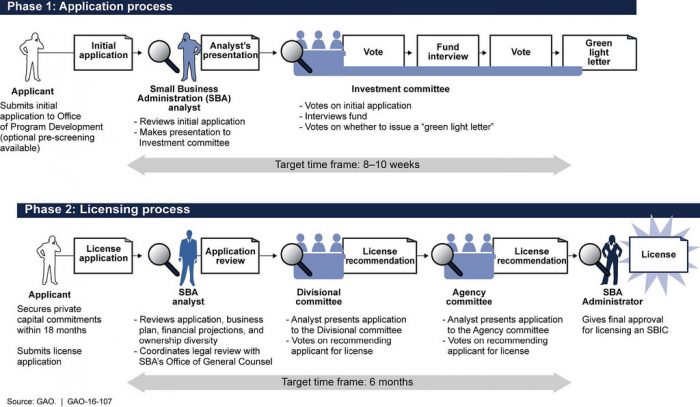According to a longitudinal study by the Bureau of Labor Statistics, only two-thirds of businesses survive more than two years and only one-third more than ten years. The study showed that the longer a business stays in business, the more likely it is to succeed over a longer period of time. While that may seem like circular logic, it’s true when you think of all of the costs that businesses need to absorb upon launch and as they scale.
According to a US Bank study, 82% of businesses fail because of insufficient cash flow. This could include everything from high-interest loan payments to not getting paid on time from customers or clients.
Small businesses remain the backbone of the US economy, making up 99.7% of employer firms. Unfortunately, small businesses are hammered the most by hidden costs and regulations. If you are thinking of starting a business, it’s crucial that you are aware of these five hidden costs and find ways to mitigate them as you grow.
1. Permits, Licenses, and Dues
Many entrepreneurs chalk up startup costs to purchasing property, raw materials, etc. What many small businesses forget is the number of regulations they need to comply with, such as acquiring licenses, permits, and memberships from local and industry organizations. What’s more is that most of these charges recur on an annual basis.
Common licenses and permits your business will need to purchase include:
- Local business license
- Certificate of resale
- Occupational license
- Building permit (constructing a new building)
- State license (depending on what product you sell)
- Department of Health permit (primarily for food and health supplement vendors)
- Federal license (if your business is regulated by the FTC, FDA, etc.)
Beyond this, your business will need to purchase zoning permits and a certificate of occupancy if you plan to construct your own building.
It’s also ideal for your business to sign up with local organizations, such as the chamber of commerce and other industry organizations. While these organizations will have their own annual membership fees, it’s still a wise investment because they can offer resources to grow your business and reach more customers.
2. Utilities and Rent
Depending on your industry, it might be ideal to skip out on renting an office space for the meantime and instead choosing to run a startup from your home. If you need the space for your employees, there are rent-as-you-go coworking spaces, which are a cheap alternative. You can also leverage telecommunication services, such as Slack, that help you keep in contact with remote crew members.
If you do end up renting or constructing an office space, you’ll immediately run into more costs than anticipated. Beyond rent, your building manager may require you to pay for utilities, which can take up a sizeable portion of your operating budget. Beyond this, you may have to pay for everything from waste management services to waste solutions for wastewater.
These do not even include the cost of having a receptionist or investing in a dedicated phone line for your business, as well as a business address. Much of these costs can be mitigated through technology solutions, such as Call Central, although many entrepreneurs prefer that human touch to customer relations.
3. Equipment Maintenance
One major cost that’s often overlooked is basic maintenance. This can be especially costly for manufacturing or product-based industries. Maintenance costs can also extend to basic office equipment, such as printers, faxes, computer systems, etc.
You can save money by purchasing items from third-party marketplaces. Consider purchasing new equipment that is less likely to break down and getting a warranty on all products, if it’s affordable in the short-term.
4. Shrinkage
Shrinkage occurs when inventory is lost between purchase from your supplier and its expected arrival. Shrinking can also refer to other areas where inventory may be lost, including employee theft. According to one study, businesses lose $60 billion a year through shrinkage. Mitigating shrinkage will require you to implement a better tracking system for all equipment.
Another area that costs businesses a lot of money is product returns. Whether it’s through deceptive advertising, defective products, or even poor consumer sentiment, returns are a costly industry. In total, product returns rob $260 billion from the economy each year.
To prevent product returns, you should talk to your customers to identify the source of the problem. You should also alter your messaging to make it more consistent with the expected experience of the product.
5. Benefits, Perks, Insurance, and Incentives
Finally, many entrepreneurs struggle to acquire high-level talent without a benefits package in place. Unfortunately, even having a basic benefits package, consisting of health insurance, a retirement plan, and paid time off could substantially raise the cost of your employees by one and a half greater than their basic salary.
Depending on the size of your business, you may be required under the ACA to provide health coverage for your employees. This has forced many businesses to intentionally avoid scale, by purposefully not hiring full-time employees to avoid the cost of health insurance.
Consider that at the end of the year, an annual salary of $40,000 could end up totaling $60,000 per employee after factoring in benefits. This is not to mention the small employee perks you may provide, such as pizza Friday or company outings. This will be something you’ll need to budget on early and consider during the business planning stage.
Final Thoughts
A majority of businesses fail because they run into cash flow problems trying to operate under an unsustainable business model. These five hidden costs are inevitable to any business and only increase at scale. Finding ways to mitigate these costs is the key to staying afloat in the market and eventually growing your business.
Find a Home-Based Business to Start-Up >>> Hundreds of Business Listings.


















































